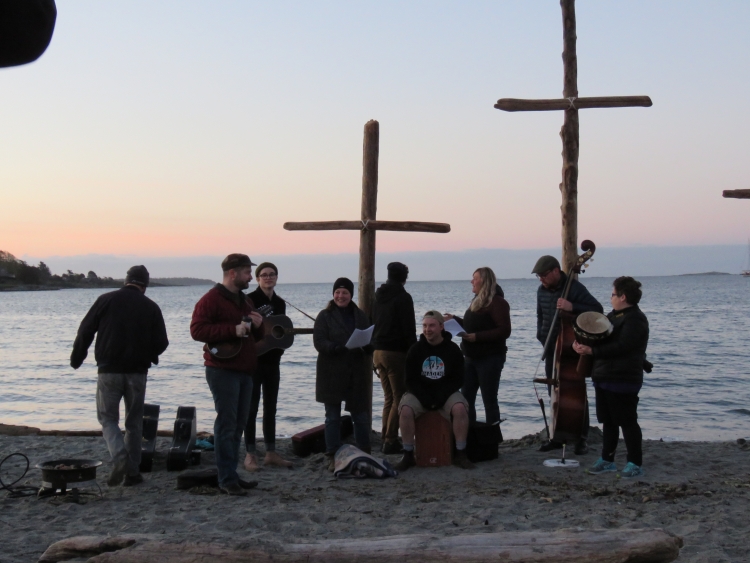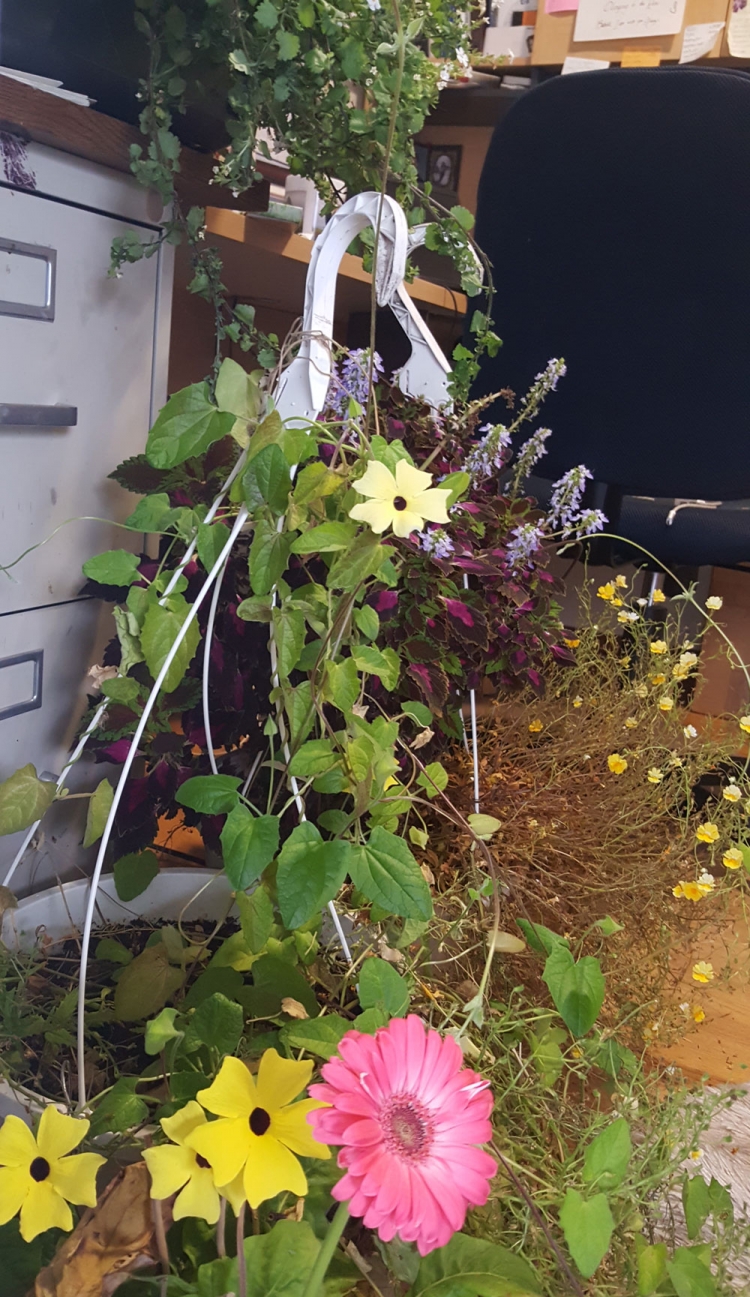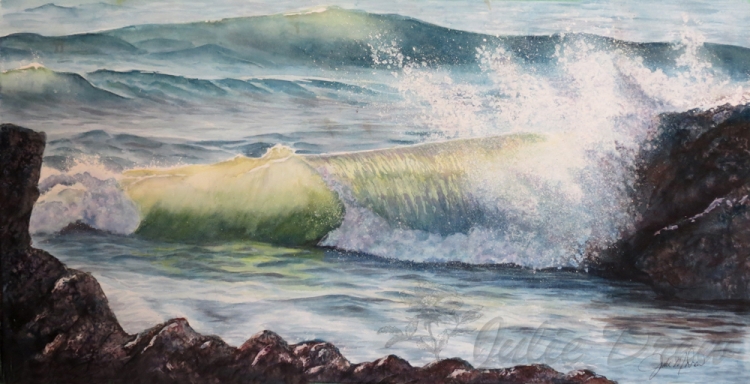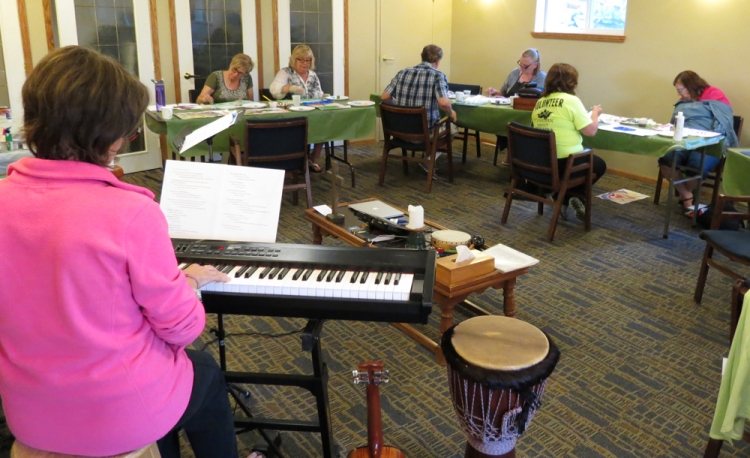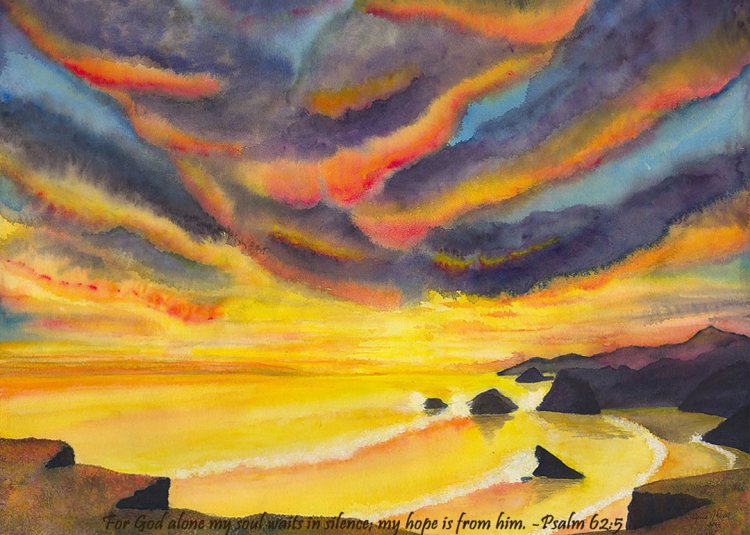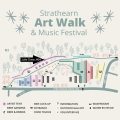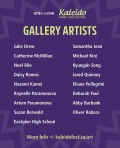 Julie Drew Where Art Meets Faith
Julie Drew Where Art Meets Faith Erika's Response to the Art Vocabulary of the Soul Retreat
Art, Vocabulary for the Soul Retreat
June 19-21, 2015
By Erika Elektra Ewen
(Reprinted from the Trinity Team newsletter of Trinity Evangelical Lutheran Church, Edmonton)
In spring 2015, I picked up a brochure at Trinity Church entitled “Art Vocabulary for the Soul Retreat” which changed my life. Its contents stimulated me as the approach described was new and exciting. My attendance at the Retreat gave me a much needed rest from everyday life, taught me that forms of art, such as watercolour painting, when combined with scripture readings can open the emotional part of your brain to express your spirituality in a different and creative way and, thereby, help you come closer to God. I was also inspired to take watercolour painting courses in the fall so I have a new hobby to pursue and a different way to express my spirituality.
I carpooled down with two ladies. The drive went well except for the thunderstorm and massive hailstorm we encountered that resulted in us pulling over and stopping. While waiting for the storm to ease up, I glanced out the window, saw a thick straight lightning bolt just across the highway and heard a very loud clap of thunder right next to me. Naturally this scared me and made a large impression on me. The remainder of the drive was uneventful.
The Retreat was held at King’s Fold which is close to Cochrane, overlooks Ghost River and has spectacular views of the mountains in the distance. King’s Fold fits in with the natural environment and was built to be a place of discernment, renewal, rest, learning and creating. It includes many sacred places such as a chapel that is open all the time, a labyrinth, and several prayer walks. King’s Fold also offers “animal therapy” by having a dog and two cats, one which closely resembles one of my cats. Friendly staff cooks excellent meals on site and interact with the guests.
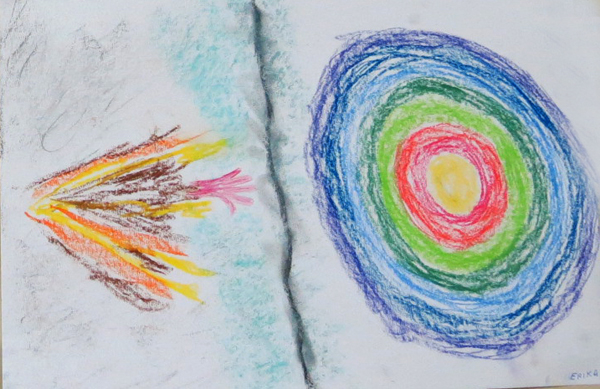 Julie and Sam Drew ran the Retreat. Julie is a successful Edmonton watercolour painter and her husband, Sam, is a former pastor and excellent poetry writer. Julie and Sam used various techniques throughout the weekend to help us disengage from our usual analytical thinking approach to life to go deeper to access our emotions to better understand our spirituality and relationship with God and express these through art (painting, writing, etc.). The scripture readings were passages that focused on different names for God.
Julie and Sam Drew ran the Retreat. Julie is a successful Edmonton watercolour painter and her husband, Sam, is a former pastor and excellent poetry writer. Julie and Sam used various techniques throughout the weekend to help us disengage from our usual analytical thinking approach to life to go deeper to access our emotions to better understand our spirituality and relationship with God and express these through art (painting, writing, etc.). The scripture readings were passages that focused on different names for God.
Our first exercise on Friday evening was very insightful to me. Julie discussed the objective of the Retreat and showed slides of some of her watercolour paintings. Sam, read some of his poetry, and showed some of his art to illustrate that one does not have to be an expert to express oneself through art. Our first assignment was to make a drawing of our drive down and our expectations of the weekend. I made a quite abstract chalk drawing with everything drawn horizontally. I started with the lightning strike surrounded by thick black lines, showed the mountains from a distance and ended with happy bright colours to illustrate my feelings about attending the Retreat. (see paintings above) Our drawings were then given to another person who had to draw a second drawing showing how she/he interpreted the drawing. I was very surprised at how and why my drawing was interpreted in a certain way. The person drew a large erupting volcano and lightly drew some small mountains. From then on, I thought of myself as a volcano. We were also asked to make a drawing of our interpretation of our relationship with God. I continued with the analogy of seeing myself as a volcano and used chalk to draw a thick black line between a volcano and a multi-coloured circle that represented God. I explained to the group that my drawing represented that I felt cut off from God. (painting on the left)
On Saturday morning, Sam read John 10: 11 - 18 using the Lectio Divina approach. This consists of reading the passage three times. After the first reading, listeners are asked to describe one word that made an impression on them. After the second reading, listeners are asked to discuss a phrase to illustrate how it connects with their lives. After the third reading, listeners are asked how the passage influenced or defined their relationship with God. The objective is to go beyond analysis and instead rely on emotion when creating a work of art. I heard the word “shepherd” many times and understood that one does not need to be afraid. The word “shepherd” strongly reminded me of my favourite Psalm, Psalm 23, and the phrases regarding pastures and still waters. I made a chalk drawing depicting my revised relationship with God based on my “analytical/creative” leap from John 10: 11 – 18 to Psalm 23 to illustrate how the volcano flowed in a curve through a field and still waters towards a shepherd’s crook and a horizontal band of bright stripes of different colours representing God. Sam then read Isaiah 40:21-21 using the Lectio Divina approach. My main impressions regarding this reading were that “He sits above the circle of the earth” and “The weak who believe in God will become strong.”
Saturday after a delicious lunch, I finalized my chalk drawing of my revised relationship with God. I showed it to Julie and said I would like to try to paint it as a watercolour painting but was afraid to try since I did not know how to approach this task. Julie gave me instructions throughout the afternoon and I was able to complete a large portion of my watercolour painting despite being tired. During the afternoon, we were blessed with seeing a double rainbow. I spent some time wandering around the grounds before suppertime. After supper, I finished my watercolour painting, (painting on the right) spent some time with the cat, Tommy, who reminded me of my cat and relaxed and read in bed.
The final day of the Retreat was auspicious as it was held on the longest day of the year. In the morning, Isiah 43: 1-3 was read using the Lectio Divina approach. The main messages I received from the reading was that “I [God] have redeemed you,” I am not alone as God will keep me safe and I need to be willing to let go and let God be in control. These messages fit nicely with my first drawing of my relationship with God depicting that I have created a barrier that holds me back from having a full relationship with God.
The Retreat’s final exercise after another exceptional lunch was to meet in the chapel, play music while singing and explain some of our art. Other people also commented on our art. One person told me that a volcano can also be positive as it gets rid of dead and useless nature and revitalizes the soil by bringing fresh nutrients.
The Retreat was a positive and enlightening experience for me. I highly recommend that we have Julie and Sam Drew give a mini workshop that recreates some aspects of the Retreat so others can have the same experiences I had. This would be a unique way for us to tap our spirituality and better understand and strengthen our relationship with God.
Join us for the 2016 Art: Vocabulary of the Soul Retreats:
February 5-7, 2016 at Star of the North Retreat Centre in St Albert, AB
June 24-26, 2016 at King's Fold Retreat Centre, near Cochrane, AB
October 28-30, 2016 at King's Fold Retreat Centre, near Cochrane AB
Painting of Joy
When I was a little girl, the Christmas angel visited our home on this day while we were at church and left us each a gift. I remember the feelings of surprise and wonder and joy.
Joy is a word we hang on our Christmas tree and in decorations. We sing about it at Christmas. It is more than happy. How would you describe joy?
Joy is soul deep. It is happiness and contentment, a rightness to the universe, a “God is with me and I have nothing to fear, “ all wrapped up together and tucked deep in my soul. For me, joy bubbles up and overflows when I allow myself to be present to a situation even in sorrow. It can show up in the form of tears, song, inspiration, confidence and a smile.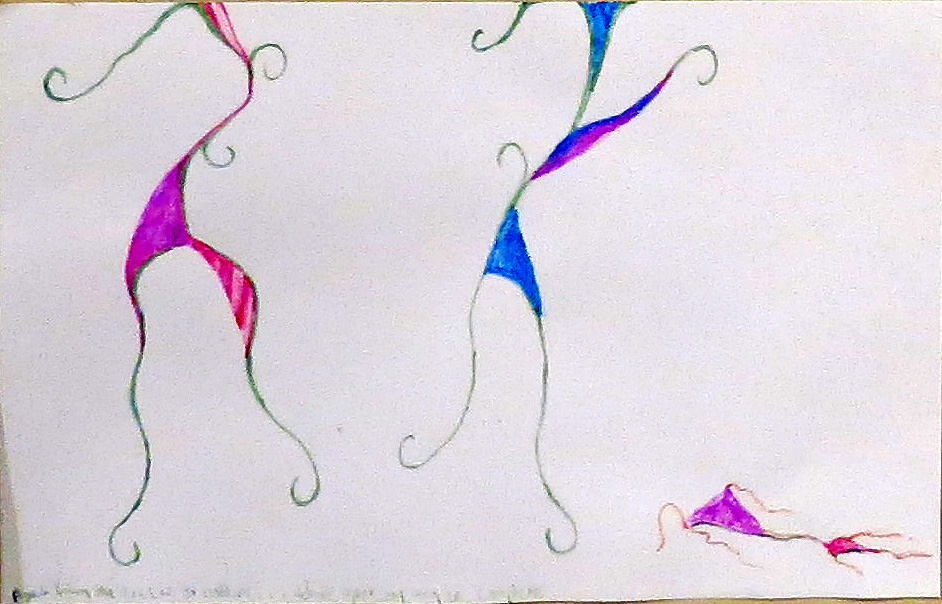
After the June 2017 Art and Faith retreat, I explored what joy looked like. Our theme at the retreat was “Abiding in Jesus.” Linnea Good, our guest leader, shared her biblical storytelling with us. As she told the story of John 15, we listened for what the Holy Spirit was illuminating for us in the passage, what stood out. We listened twice and then we responded with drawing or painting.
I started with thinking about the phrase Jesus said, "…Apart from me you can do nothing…"
I started drawing shapes that had a sense of being attached at the top of the page, connected to God. As I drew, the shapes took on vine like people shapes and developed joyful lines. I felt this sense of joy associated with the abiding and attachment. I thought how hard life is when I choose to do things on my own. It can be exhausting like the poor exhausted, deflated figure on the right side of the drawing.
When I felt I was finished, I felt from my little figures this sense of joy that the second phrase spoke of: “…that your joy may be complete…”
When I came home from the retreat, my little joy characters intrigued me. What would it be like to let them dance across a few paintings?
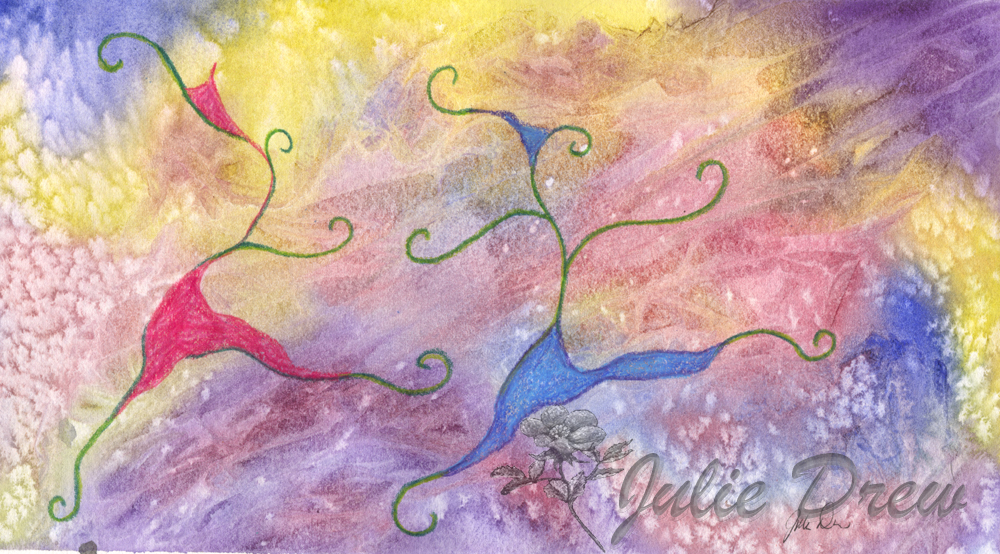


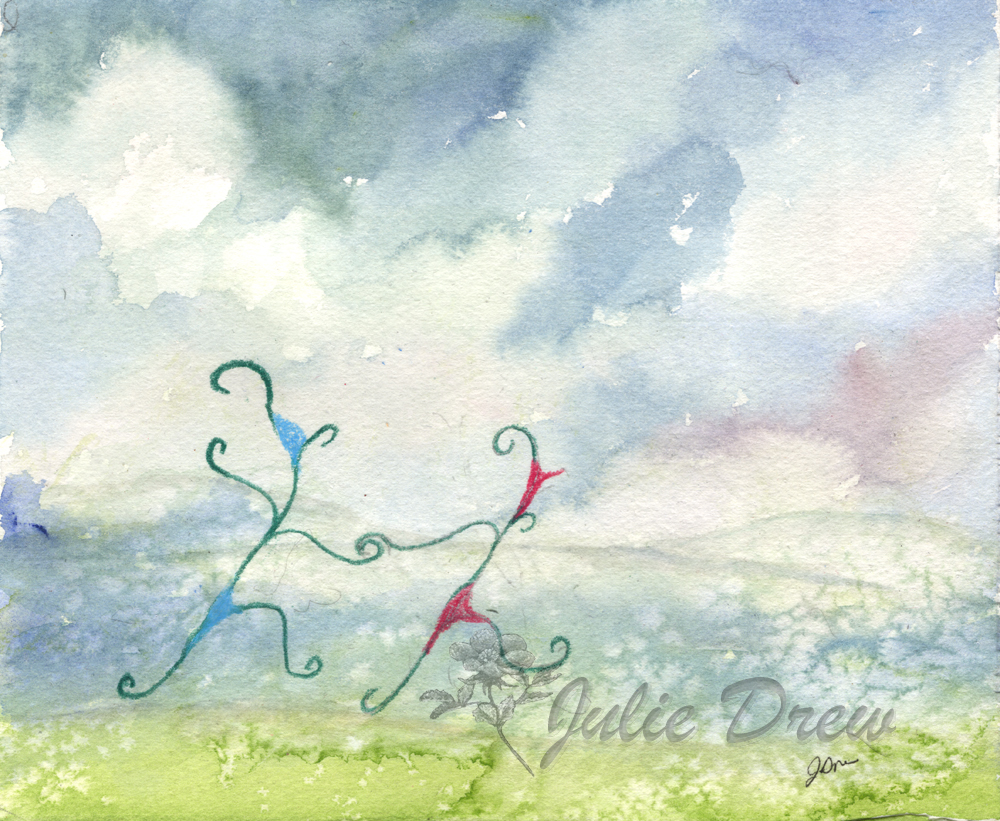

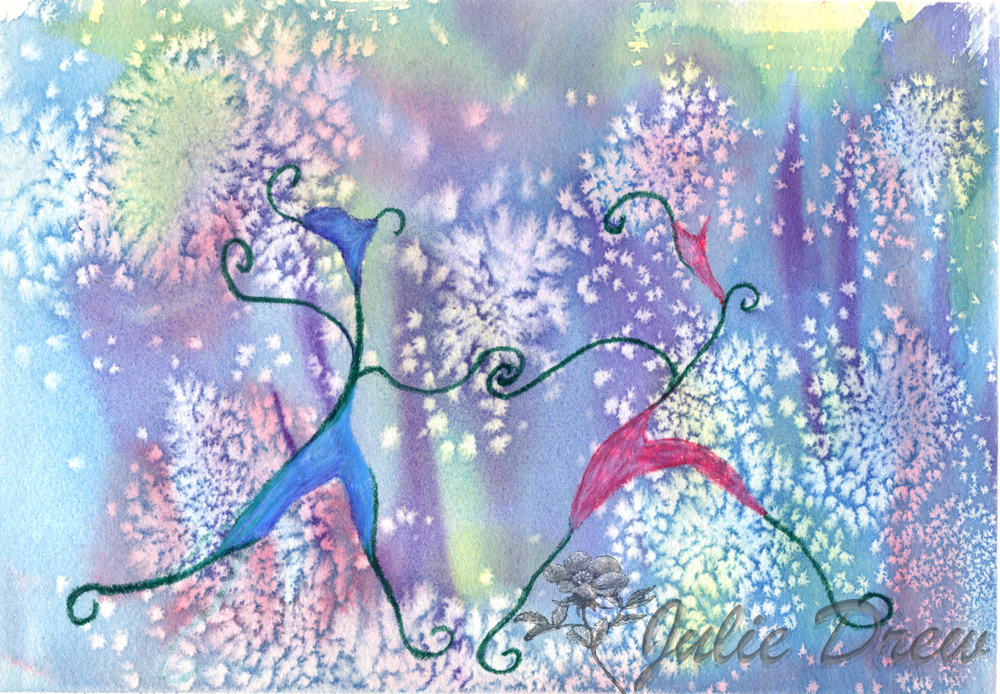
Happy Easter
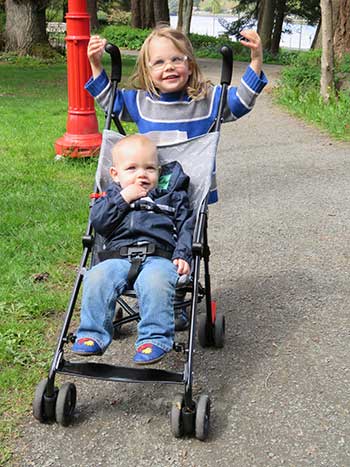 We were in Victoria over Easter visiting with our grandchildren and their parents. On Easter morning, we rose early. As the dawn began to lighten the sky, my own anticipation grew within me. My heart welling up in joy. Christ is risen, Indeed! I love the song I first heard Sandi Patti sing: https://www.youtube.com/watch?v=eb1ayV5sTtM
We were in Victoria over Easter visiting with our grandchildren and their parents. On Easter morning, we rose early. As the dawn began to lighten the sky, my own anticipation grew within me. My heart welling up in joy. Christ is risen, Indeed! I love the song I first heard Sandi Patti sing: https://www.youtube.com/watch?v=eb1ayV5sTtM
Was it a morning like this?
When the sun still hid from Jerusalem,
And Mary rose from her bed
to tend the Lord she thought was dead…
Did the grass sing?
Did the earth rejoice to feel You again?
Over and over like a trumpet underground
Did the earth seem to pound, "He is risen!"
Over and over in a never-ending round
"He is risen, hallelujah, hallelujah!"
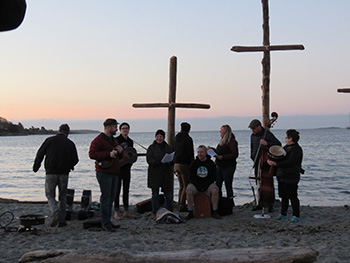 I sang most of the way on the 20-minute drive to the beach where several congregations gathered to share in greeting the sunrise with an Easter service of singing, praising God. It was a beautiful morning the clouds were a blushing rose hue. The Cascades across the Strait of Juan de Fuca were clear and bathed in pale pink. And as we sang the sun broke over the hills. Glorious!
I sang most of the way on the 20-minute drive to the beach where several congregations gathered to share in greeting the sunrise with an Easter service of singing, praising God. It was a beautiful morning the clouds were a blushing rose hue. The Cascades across the Strait of Juan de Fuca were clear and bathed in pale pink. And as we sang the sun broke over the hills. Glorious!
The week before Easter, I reworked the painting: A New Covenant for a Painting Prayers session for Lent for a women’s group. I was never quite satisfied with the part of the painting where the light was exploding out of the Holy of Holies “as the curtain was torn from top to bottom” (Matthew 27:51), so I fixed it. This moment in time is a glorious event - The curtain that separated us from the Holy of Holies, God’s presence, was torn as Jesus breathed his last. It signifies a New Covenant that the old testament passage in Jeremiah refers to:
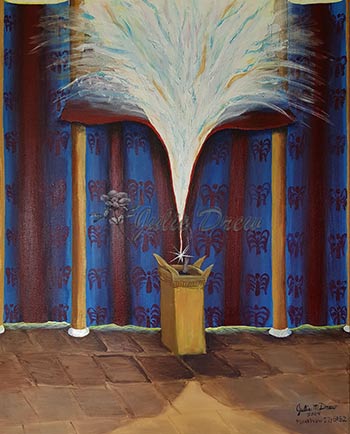 31 The days are surely coming, says the Lord, when I will make a new covenant with the house of Israel and the house of Judah…33 But this is the covenant that I will make with the house of Israel after those days, says the Lord: I will put my law within them, and I will write it on their hearts; and I will be their God, and they shall be my people. 34 No longer shall they teach one another, or say to each other, “Know the Lord,” for they shall all know me, from the least of them to the greatest, says the Lord; for I will forgive their iniquity, and remember their sin no more.
31 The days are surely coming, says the Lord, when I will make a new covenant with the house of Israel and the house of Judah…33 But this is the covenant that I will make with the house of Israel after those days, says the Lord: I will put my law within them, and I will write it on their hearts; and I will be their God, and they shall be my people. 34 No longer shall they teach one another, or say to each other, “Know the Lord,” for they shall all know me, from the least of them to the greatest, says the Lord; for I will forgive their iniquity, and remember their sin no more.
We can be known and loved by the God of the universe. He will write it on our hearts, we can belong to him, know him. “I will be their God and they shall be my people.” My heart sings glory and rejoices as it did on Easter morning.
Art is a work in progress. Is a painting ever finished? Maybe for a time. I put it in a mat, or get it framed and hang it on my wall, and I let it speak to me. I see things I didn’t before. I see connections, stories. And I sometimes see ways to repaint it, or ways to take it further to a new idea, or to improve it. Often, my paintings are my “windows to God.” Moments that I hear God speak to me in metaphor. I have shared some of that to you through my blogs and newsletters and in my book. Sometimes the same painting can speak to me differently than it did before. I may be done painting it, but the process continues with each person the painting connects with, like a story, that lives on with the retelling, with every person that it engages.
Like paintings, we are also works in progress.
There is a Time for Everything
Fall is here, the branches are bare, and the bitter cold winds are back. I brought my flowers in from the deck in to enjoy until they were done. My Gerber Daisy bloomed again, and the others have not stopped blooming. The flowers are all straining toward the window for the glimpse of light upon their faces.
They take up space on my office floor near the sliding glass door, but it is worth a little crowding to see beauty right there as I work. So fun to extend the season of growth and blooming as we move into shorter days and longer nights.
Seasons are not only about weather and nature, we human beings have our seasons as well. As I reflect on the last few months, this has been a season of learning to be present to what is right in front of me today. The outdoor painting excursions (plein air) over the summer and early fall were, perhaps, the greatest example of this. Covid 19 shutdown all of my indoor classes, but the outdoors were beautiful after all the rain in June and July, so we went outside. And there we learned to be present to and see the beauty right in front of us.
With all of the changes due to covid, the daily news, learning new ways of doing things and uncertainties of what is coming next, I looked forward to each plein air session. As I ended the plein air season, I started the online class and we have had three of the four sessions. Although well received, it has been a big learning curve, but I am adjusting and modifying it as we go along. (I had to try different tripods, and get a new piece, an arm extension, for my tripod to make it work better.) In the last session, I had us all painting the same flower (the one blooming in my office). I tell myself that I do not have to figure it all out, and I can ask for help, which allows me to be present and take one step at a time.
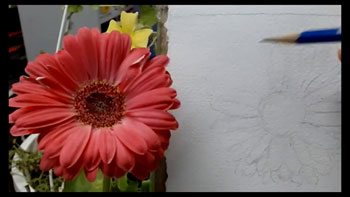
This all led to my thinking about the passage in Ecclesiates 3 that
1 There is a time for everything,
and a season for every activity under the heavens:
2 a time to be born and a time to die,
a time to plant and a time to uproot,
3 a time to kill and a time to heal,
a time to tear down and a time to build,
4 a time to weep and a time to laugh,
a time to mourn and a time to dance,
5 a time to scatter stones and a time to gather them,
a time to embrace and a time to refrain from embracing,
6 a time to search and a time to give up,
a time to keep and a time to throw away,
7 a time to tear and a time to mend,
a time to be silent and a time to speak,
8 a time to love and a time to hate,
a time for war and a time for peace.
For each statement there is an antithesis. Opposites. Even extreme opposites. As I looked at the passage this morning, I realize I prefer to focus on the positive sides: to plant, to heal, to build to laugh, to dance, etc. There are times when the opposite is necessary: to grieve, to die, to throw away, to speak, to hate, etc. But there is an in between place that is not spoken in some of these, not necessarily a wishy-washy middle ground either, but another space of time to be in. I decided to find the in between space for each. Here are my results:
Born – die… there is a time to live;
plant – uproot… there is a time to grow, flourish and even harvest
kill – heal… there is a time to get along with each other, respect, nurture each other
tear down – to build… there is a time to take care of what is there, appreciate what you have
weep – laugh… there is a time to just breathe
mourn – dance… there is a time to just be
scatter – gather… there is a time to not take personally what others do
Embrace – refrain form embracing… there is a time to just be together
Search – give up… there is a time to let go
Keep – throw away… there is a time to reuse, recycle, repair
Tear and mend… there is a time to clean and take care of
To be Silent – to speak out… there is a time to be yourself
To Love and to hate… there is a time to accept others as different from yourself
War and peace… there is a time to forgive
I cannot change others, or the world, but I can work on myself. What season or time are you in?
Steadfast Love Never Ceasing
The steadfast love of the LORD never ceases,
his mercies never come to an end;
they are new every morning;
great is your faithfulness.Lamentations 3:22-23
One summer I was at the beach in Oregon, just watching those crashing waves come in and pour over the sand and rock. I had been contemplating this verse in Lamentations. I thought about how those waves are never ceasing. They just come and come, over and over. Endless. Never ceasing.
Even when the water seems almost calm and still the waves continue the gentle lapping against the shore like a breath – like breathing. In and out, in and out.
If you stand in the ocean and let it run into you with the power of the waves. They can rock you on your feet.
God’s love, constant and never ceasing, is like those ocean wave that just rushes in not stopping, limitless.
Think about God’s love as waves of love washing over you. Let him rock your world with the power of his love. His mercy never ceasing, his love never ending, washing over you, breathing into you.
Think about that today. Where does that take you?
This will be another verse for the Art Vocabulary of the Soul Retreat, October 28-30, 2016 on Saturation: Eph 3:16-20
Come join us and see where God wants to lead you and speak into your heart.
Only a few spots left- don’t delay. Sign up today.
Bloom Where You Are Planted
I love wildflowers – maybe because no one planted them and they are just there to be. I am thrilled to come across fields of them when hiking. I look for them on the forest floors. Some are so tiny, they are easy to miss. They are not usually in cultivated gardens. That would, after all, go against the definition of a wildflower:
a flower of an uncultivated variety or a flower growing freely without human intervention.
Do you know how you are supposed to plant a packet of wildflower seeds – randomly toss the seeds over a designated space of soil and lightly cover with top soil.
Since I planted them – does that make them cultivated and not wild? Is it intervention when I move them back to the part of the garden where I want them to stay?
Wildflowers can be beautiful weeds when they pop up where you don't want them. They are hardy plants that flourish in difficult places. They do not require great care. They are tenacious, they travel and do not stay in one nice uniform place in my garden.
I finished this painting of wildflowers, Bloom Where You Are Planted, (10 x 7 in, watercolor) during the Deep Freeze festival this month. The process of this painting reflects on the subject matter.
Part one - arbitrary, haphazard. (Wildflowers show up wherever there is a bit of dirt – not planted or planned.)
During a watercolor class I was teaching, I started this piece as a demonstration for pouring watercolor. I had a vague plan… I arbitrarily masked out bits of possible flowers and a butterfly. This would save the white of the paper for later. While I waited for it to dry, I prepared three small containers of watery watercolor: green, blue and pink.
I wet down the paper, poured on the paint, threw on some table salt and placed some rock salt at random intervals. Using a bit of hard plastic, I quickly made random strokes for grass lines. I let it dry.
I wanted stronger colors, so I masked out some places I wanted to keep from the first pouring. I prepared three more cups of watery watercolor and poured it on. Salted again and waited for the result.
After it was completely dry, I took off the masking fluid and salt.
Part two – Turning dabs into flowers wherever they show up. (Wildflowers bloom wherever they are. I have found chamomile growing in cracks in the sidewalk.)
This is the stage that I brought to the Deep Freeze festival to work on. Once the masking fluid and salt were removed, I could see the different parts that were saved. Now came the point of turning the random bits of white into the flowers and a butterfly. I looked through some photo refences of wildflowers to get possible ideas for both the flowers and the butterfly. The flowers are asters, daisies, black eyed susans and additional flowers from the ideas of others. The butterfly is a combination of several butterflies.
It is fun to see where it can go. This is a good challenge for me to not have everything figured out ahead of time, as I often try to control too much. It allows me to trust the process, letting the flowers bloom where they fell on the page.
Like the hardy wildflowers that bloom wherever their seeds fall, we too can bloom where we are ‘planted.’ We do not have to always be in control – really. I was thinking of this as I was reading in Jeremiah chapter 29. Jeremiah tells the people in exile to build houses have families… go about life. Don’t live as if your current situation is temporary. Don’t wait to be present until some ‘tomorrow’ comes. They are going to be there for awhile (70 years). He is calling them to bloom where they have been (trans)planted. They need the hardiness of wildflowers to bloom in unfamiliar territory. And through Jeremiah, God promises that he has plans for them.
Bloom. Be. Do what you do. Shine. Make the world a beautiful place.
Wildflowers do that. Can I?
Celebration of the Weekend Retreat
Celebrating the Art: Vocabulary for the Soul Retreat
an Art and Faith Retreat
What a great group to spend the weekend with!!
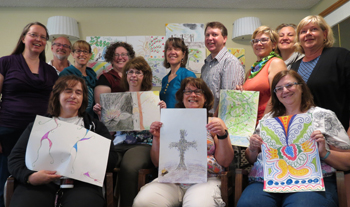
Friday night creating and getting to know one another:
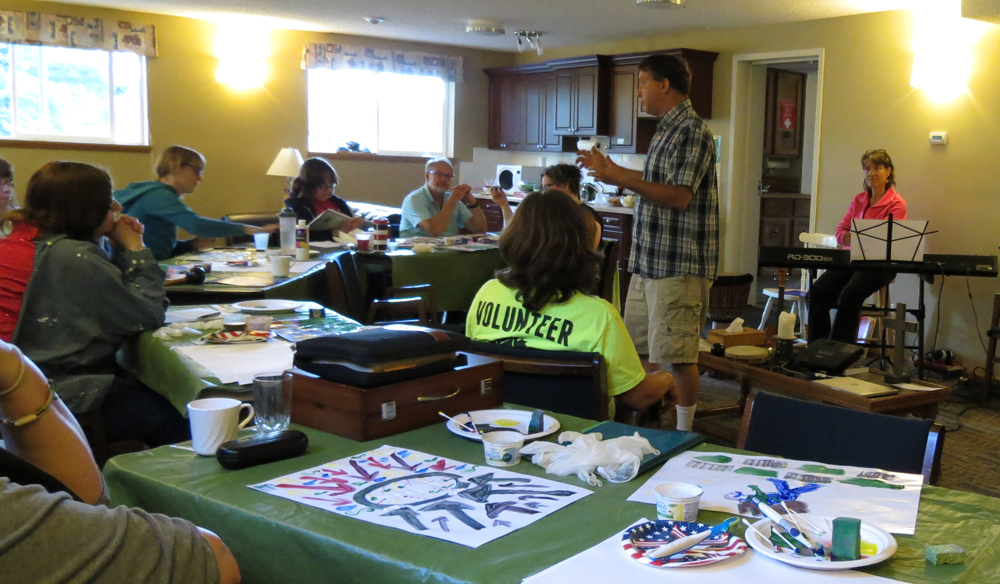
Taking a walk, enjoying the views
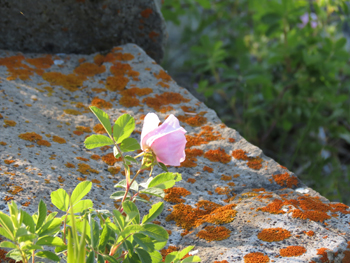

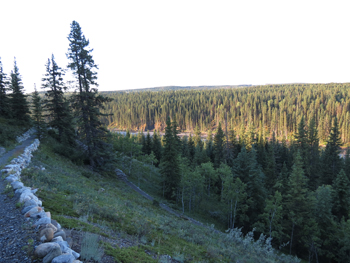
We had a great time creating, listening and resting.
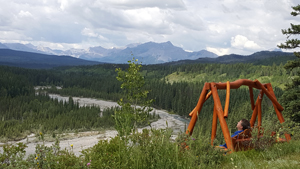
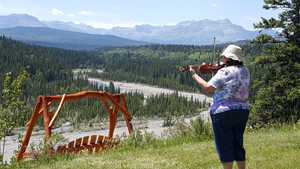
We filled the walls with our creations.
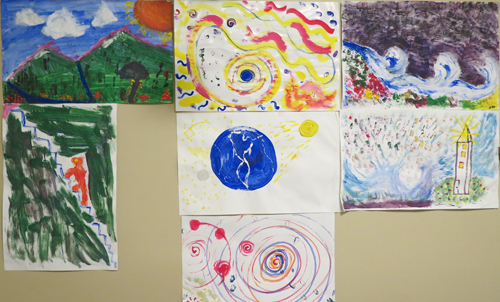

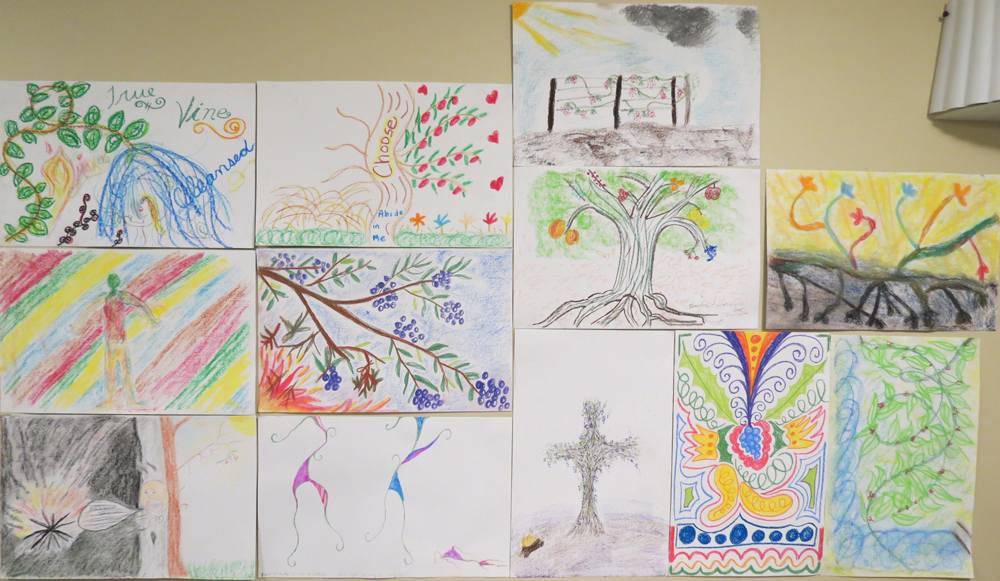
We even learned how to play the ukulele at a campfire with Linnea Good.

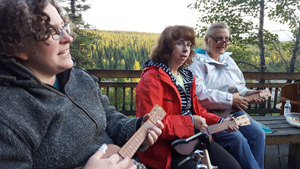
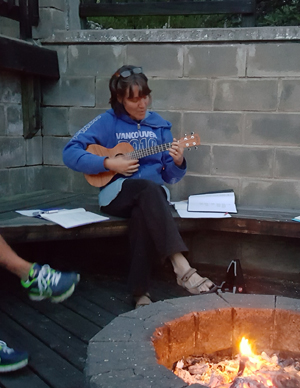
I want to say a BIG thank you to each one who came for the blessing they gave us of their presence, their time, and their creativity as we shared and created together.
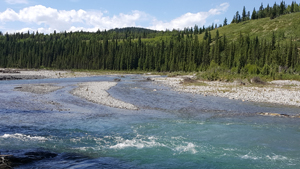
Did you miss this retreat?...The next Art: Vocabulary For the Soul Retreat is in October and sign up has already begun. Early bird price through July 11, 2017.
Don't miss out..sign up today.
Intergen Art & Scripture-by-Heart Online Workshop
SAT, October 25, 2025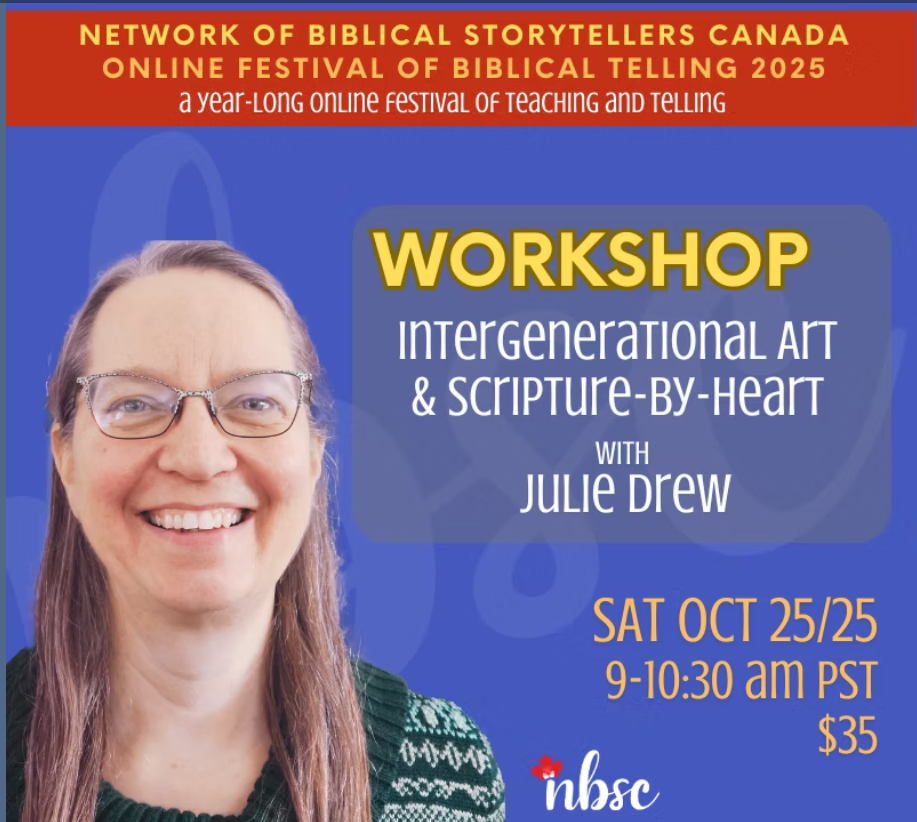
WORKSHOP 5: Julie Drew
Intergen Art and Scripture-by-Heart
9-10:30 am PST
$35 CAD
This creative session is designed to get your creativity flowing and connecting with the scripture in fresh ways. Julie Drew invites you to join her in exploring what God is moving in you as you learn scripture by heart.
Julie will introduce the process, and share some of her own art work and scripture.
The rest of the session, we will listen to some scripture and respond with painting. We see where the process takes us. This isn’t about great works of art – just the creative process of letting out what is inside of us to be seen. It is another way of listening and responding to scripture.
We do not always see our own hearts, emotions, and life clearly. Art has a way of bringing to light that which we can not clearly see, if we are open to the process. The Holy Spirit is ready to connect with us and intercede for us with “sighs too deep for words.” (Rom. 8). This painting process is a connection to that inner part of us and the Holy Spirit, through painting.
Julie requests that you come to the session with the art medium of your choice. (paper and pencil, ink, color pencils or paint (i.e. watercolor, tempera)).
(you can sign up for just this one session or for the whole year with videos of previous sessions.)

